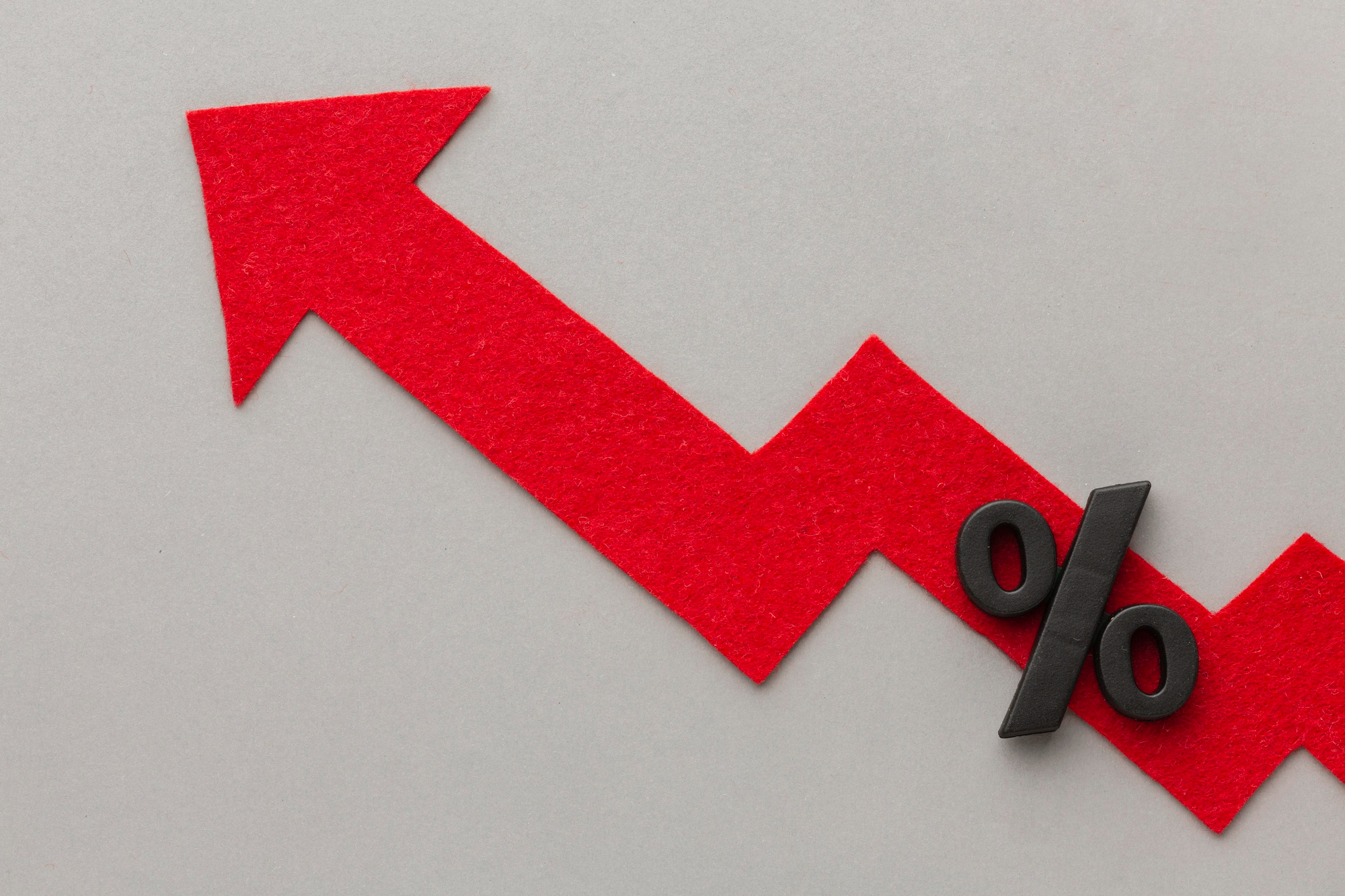Interest rates play a pivotal role in the functioning of economies worldwide. They influence borrowing, saving, investment, and overall economic activity. Over the past decade, interest rates have undergone significant changes, shaped by various factors including central bank policies, economic conditions, and global events.
Factors Influencing Interest Rates
Interest rates are influenced by a myriad of factors, both domestic and international, that collectively shape their trajectory over time. These factors include:
- Central bank policies: Central banks, such as the Federal Reserve in the United States or the European Central Bank in the Eurozone, play a pivotal role in influencing interest rates through their monetary policy decisions. These decisions include setting short-term interest rates, conducting open market operations to control the money supply, and providing forward guidance to markets regarding future policy actions.
- Inflation rates: Inflation, the rate at which the general level of prices for goods and services rises over time, directly impacts interest rates. Lenders typically demand higher interest rates in environments with high inflation to compensate for the decreased purchasing power of future returns. Conversely, low inflation environments may lead to lower interest rates as lenders anticipate less erosion of purchasing power over time.
- Economic growth and unemployment: The overall health of the economy, as measured by indicators such as gross domestic product (GDP) growth and unemployment rates, influences interest rates. Strong economic growth and low unemployment levels typically signal robust consumer demand and business investment, potentially leading to higher interest rates as lenders demand higher returns to offset increased borrowing risks.
- Global economic trends: Interest rates can also be influenced by global economic trends and events. Factors such as changes in international trade dynamics, geopolitical tensions, and shifts in investor risk appetite can impact interest rate expectations and market sentiment. For example, heightened uncertainty in global markets may lead investors to seek safe-haven assets, driving down bond yields and influencing interest rate movements.
Understanding these factors and their interactions is crucial for policymakers, investors, and consumers alike, as interest rates play a central role in shaping economic outcomes and financial market dynamics.
The Decade of 2010-2020: A Recap
The past decade witnessed a tumultuous period for global interest rates, characterized by unprecedented monetary policy interventions and shifting economic landscapes. Following the aftermath of the 2008 financial crisis, central banks embarked on an era of unprecedented monetary easing, slashing interest rates to historic lows and implementing unconventional policy measures such as quantitative easing.
These accommodative policies were aimed at stimulating economic growth, reducing unemployment, and preventing deflationary pressures. However, despite the aggressive monetary stimulus, global interest rates remained subdued throughout much of the decade, reflecting persistently low inflation and subdued economic growth.
The prolonged period of low interest rates had profound implications for various sectors of the economy. In the realm of finance, investors grappled with the challenge of generating sufficient returns in a low-yield environment, leading to a search for alternative investment opportunities and higher-risk assets. For households, low interest rates translated into lower borrowing costs, spurring demand for mortgages, auto loans, and other forms of consumer credit.
However, savers faced the prospect of diminished returns on their deposits and fixed-income investments, prompting a reassessment of long-term financial planning strategies. Moreover, the prolonged period of low interest rates fueled concerns about the potential formation of asset bubbles and excessive risk-taking behavior in financial markets.
Impact of COVID-19 Pandemic
The emergence of the COVID-19 pandemic in 2020 brought unprecedented challenges to the global economy, triggering a sharp downturn in economic activity and financial markets. In response to the crisis, central banks around the world swiftly deployed a range of monetary policy tools to support liquidity, stabilize financial markets, and cushion the economic impact of the pandemic.
The following table outlines some of the key monetary policy measures implemented by central banks in response to the COVID-19 pandemic:
| Central Bank | Interest Rate Cuts | Asset Purchase Programs | Emergency Lending Facilities |
| Federal Reserve (USA) | Multiple cuts to near-zero levels | Expanded purchases of Treasury securities and mortgage-backed securities | Established lending facilities to support businesses and municipalities |
| European Central Bank | Cut rates deeper into negative territory | Expanded asset purchase program, including corporate bonds | Implemented targeted longer-term refinancing operations |
| Bank of England | Cut rates to historic lows | Increased government bond purchases | Launched term funding schemes for banks |
These measures aimed to mitigate the economic impact of the pandemic, support financial markets, and provide liquidity to businesses and households facing cash flow challenges.
Current Interest Rate Landscape
In the aftermath of the COVID-19 pandemic, the global economy is still grappling with the lingering effects of the crisis. Interest rates, which plummeted to historic lows in response to the economic turmoil unleashed by the pandemic, remain subdued in many parts of the world. Central banks, recognizing the fragility of the economic recovery, have opted to maintain accommodative monetary policies to support ongoing efforts towards full economic normalization.
Despite early signs of recovery in some sectors, significant uncertainties persist, casting a shadow over the trajectory of interest rates in the near term. Central banks are closely monitoring key indicators such as employment levels, inflationary pressures, and the pace of vaccination rollouts to gauge the strength and sustainability of the economic rebound. The unprecedented nature of the pandemic has necessitated a cautious and data-dependent approach to monetary policy, with policymakers emphasizing flexibility and responsiveness to evolving economic conditions.
Moreover, the persistence of low interest rates has raised concerns about their long-term implications for financial stability and market dynamics. While low borrowing costs have provided much-needed relief to borrowers and facilitated access to credit, they have also fueled asset price inflation and encouraged risk-taking behavior in financial markets. Central banks are keenly aware of the potential risks associated with prolonged periods of ultra-low interest rates, including the buildup of leverage, misallocation of capital, and the formation of asset bubbles.
Looking ahead, the path of interest rates will likely be shaped by a confluence of factors, including the trajectory of the pandemic, the effectiveness of vaccination campaigns, and the extent of fiscal stimulus measures. Central banks will remain vigilant in their efforts to strike a balance between supporting economic recovery and safeguarding financial stability. As policymakers navigate the uncertain terrain of the post-pandemic economy, the management of interest rates will continue to play a critical role in shaping the trajectory of global growth and prosperity.
Implications for Consumers and Investors
The prolonged period of low interest rates has significant implications for both consumers and investors, shaping their financial decisions and risk profiles in various ways. These implications include:
- Consumer Borrowing Costs: Low interest rates translate into lower borrowing costs for consumers, making mortgages, car loans, and other forms of credit more affordable. This can stimulate spending and investment in the economy as consumers take advantage of favorable borrowing conditions.
- Savings and Investment Challenges: However, savers and retirees may face challenges in generating sufficient income from their investments in a low-yield environment. Traditional fixed-income securities offer meager returns, prompting individuals to explore alternative investment strategies to meet their financial goals.
- Investment Opportunities: The low interest rate environment presents opportunities for investors across asset classes. Equities, in particular, have historically benefited from low interest rates, as investors seek higher returns in riskier assets amid low bond yields.
- Risk Management: Despite the potential for higher returns, the prolonged period of low interest rates also poses challenges for investors. Concerns about asset price inflation, excessive risk-taking behavior, and market distortions require investors to carefully assess the risk-return trade-offs of their investment portfolios.
- Diversification and Vigilance: In such an environment, diversification across asset classes becomes essential for managing risk and achieving long-term financial objectives. Investors must remain vigilant to evolving market dynamics and macroeconomic trends, adapting their investment strategies accordingly to navigate the complexities of the low interest rate landscape.
Understanding these implications is crucial for both consumers and investors as they navigate the challenges and opportunities presented by the current interest rate environment.




